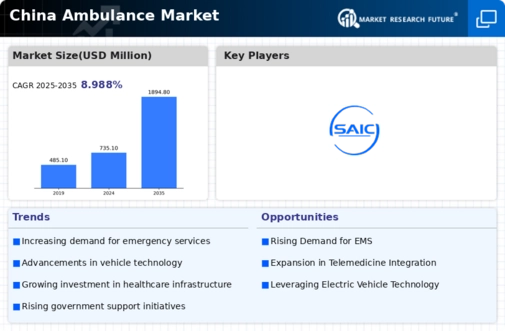The China Ambulance Market is characterized by a dynamic competitive landscape driven by increasing demand for emergency medical services, urbanization, and advancements in medical technology. As healthcare infrastructure continues to evolve in China, various players are vying for market share by offering innovative ambulance solutions that combine both medical and technological enhancements.
Factors such as government investments in healthcare, rising disposable incomes, and a greater focus on emergency services have contributed to the growth of this market.
Competitive strategies among manufacturers include differentiating product offerings, enhancing service capabilities, and forming strategic partnerships, all of which are crucial as companies seek to address the high stakes inherent in emergency care.
Hunan Jiangnan has established itself as a key player in the China Ambulance Market with a robust presence and strong product offerings. The company has focused on developing a range of specialized ambulances tailored to meet the needs of different medical emergencies.
Its strengths lie in its commitment to quality manufacturing processes and an understanding of the unique requirements of healthcare facilities across different regions of China. Hunan Jiangnan has developed a reputation for producing reliable and adaptable vehicles, which are integral to modern emergency response systems.
By leveraging its local knowledge and expertise, the company has positioned itself to capitalize on the growing demand for efficient and versatile ambulances, thereby solidifying its market stance.
Xuzhou Construction Machinery Group operates within the China Ambulance Market by providing not only construction-related equipment but also specialized medical transportation vehicles. The company's strength lies in its strong engineering and manufacturing capabilities, which allow it to produce high-quality ambulances and emergency response vehicles.
Key products include fully equipped ambulances that meet stringent healthcare standards. The company has strategically expanded its market presence through various mergers and acquisitions, enabling it to incorporate advanced technologies and streamline its production processes.
Xuzhou Construction Machinery Group’s focus on innovation and efficiency, along with its comprehensive portfolio of emergency vehicles, has made it a notable competitor in the market, contributing to the overall enhancement of emergency response capabilities in China.












Leave a Comment